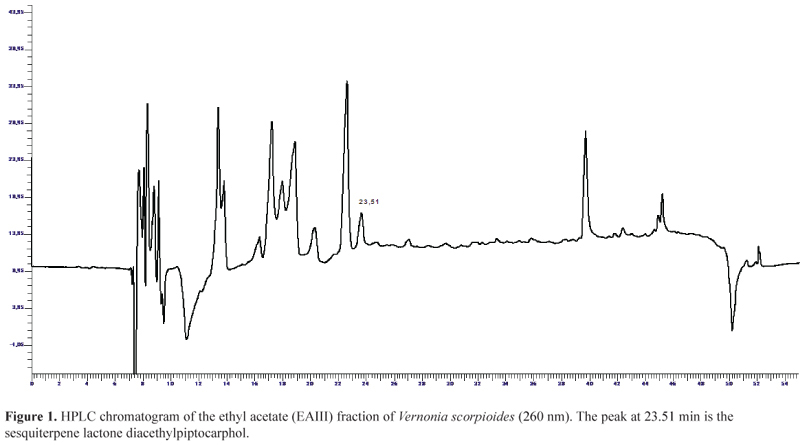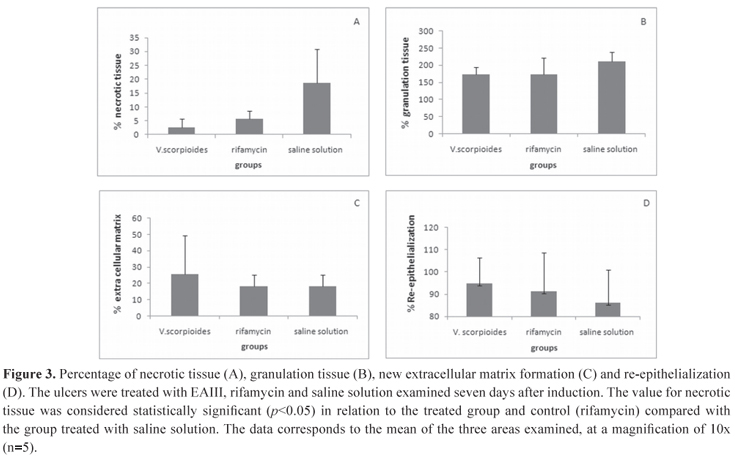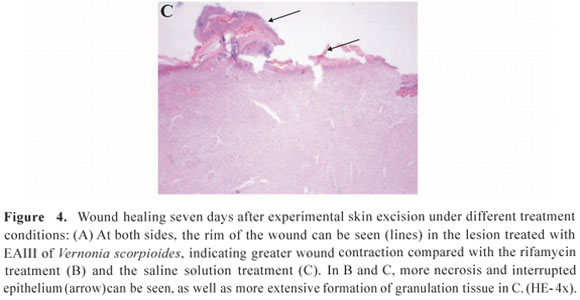We investigated the healing process on excisional wounds infected with Staphylococcus aureus in rats, treated with 50 µL of ethyl acetate III from Vernonia scorpioides (Lam.) Pers., Asteraceae, rifamycin diethylamide B 25 mg, or saline. The lesions were measured daily and after seven days were surgically removed and histologically processed. The results indicate a favorable action of the EAIII, demonstrated by the increased wound contraction, smaller area of necrotic tissue, good development of granulation tissue, extensive extracellular matrix deposition and epithelial regeneration. This sub-fraction was phytochemically investigated in parallel studies, revealing the presence of sesquiterpene lactones (glaucolides and hirsutinolides) such as diacethylpiptocarphol and related hirsutinolides, flavonoids and cinnamic acid derivatives and also a new polyacetylene, which have been previously published. Results support the effectiveness of V. scorpioides antimicrobial activity in infected wound healing in rats.
Vernonia scorpioides; ethyl acetate fraction; wound healing; Staphylococcus aureus






